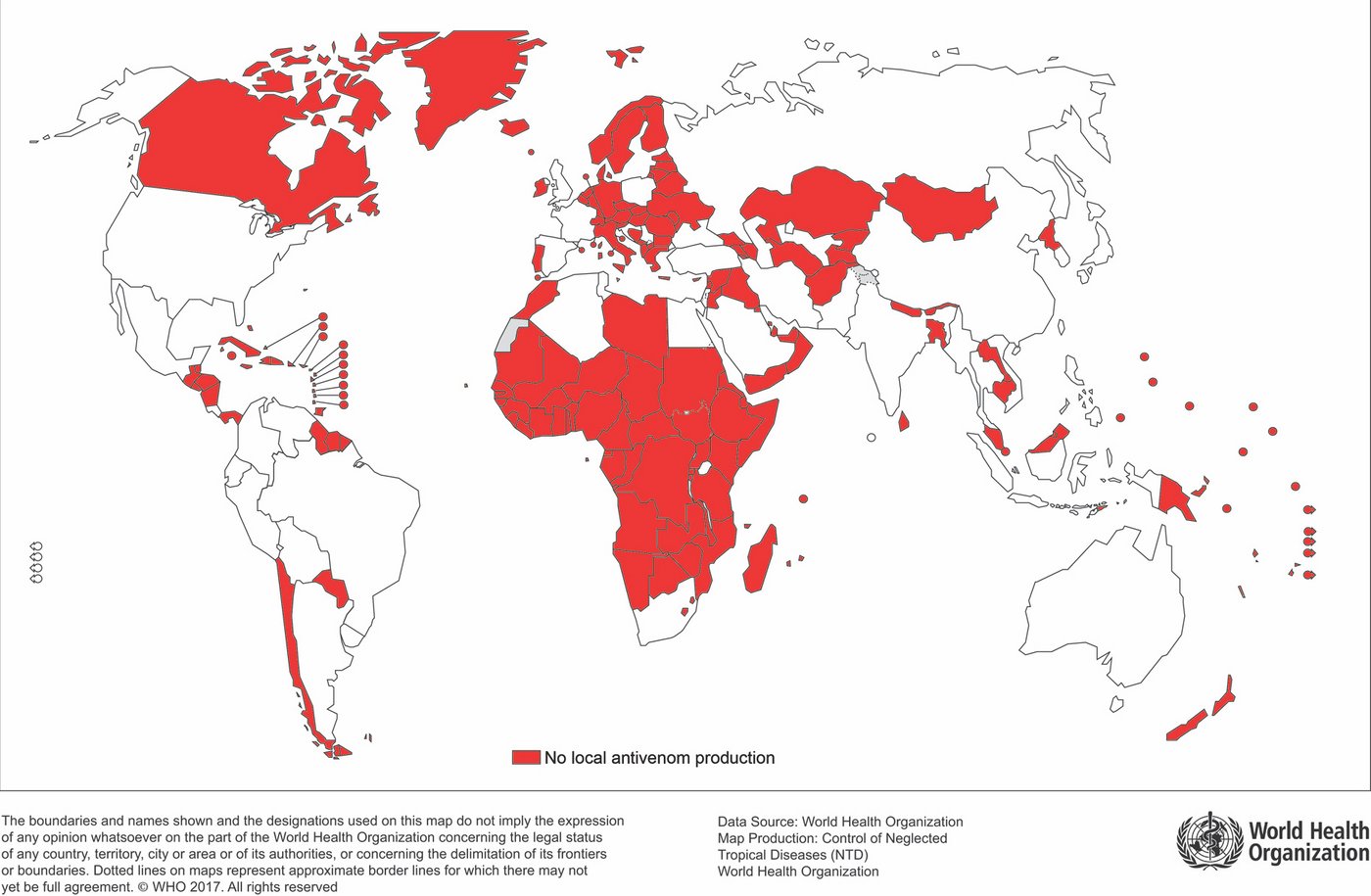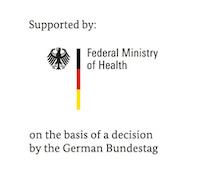Antivenom Crisis
The usage of antivenom is one of the most important measures to control and manage snakebite envenoming. Despite the high prevalence of snakebites and the associated need for effective antivenoms, the availability of antivenoms is declining. The last few decades have been marked by a decline in production, a loss of confidence in the products, and the underutilisation of proven life-saving antivenom products.
The problems of snake antivenom
Since poorer and marginalized populations are particularly affected by snakebites, the market incentive to research and produce antivenoms is very low. Additionally, antivenoms are very specific to one or a few snake species and are therefore only used for a certain population size, which further makes research and production less appealing.
This is because the toxins that enter the body during a snake bite vary greatly from snake species to snake species and can also have regional differences. Therefore, antivenoms have to be produced individually for each snake species, the so-called monovalent antivenom, or mixed for several snake species in one antivenom, the so-called polyvalent antivenom. For this, the regionally relevant snake species and their implications must be known. Not only is the production complex, but the clinical testing and registration of the antivenoms in individual countries are expensive and time-consuming. Many antivenoms on the market and in use have no preclinical or clinical results. Therefore, more uniform regulation and execution of clinical studies and licensing would be beneficial. For the African continent the newly introduced African Medicines Agency (AMA) located in Rwanda could be a way to improve this.
Further, only a small proportion of antivenom is manufactured for international use, while most manufacturers produce only for national or regional use. This points to the importance of local production, which should be encouraged especially in countries where snakebites are prevalent. As can be seen on the map on the right side, this is especially needed for the African continent where snakebite is prevalent and local production is low.
The "vicious cycle"
Why this crisis persists and how it leads to the aforementioned loss of confidence and underutilisation of antivenom products can be explained by the “vicious cycle”. The initial situation is a low supply of antivenom and, consequently, high prices for antivenom. This often leads to cheaper - and often less effective or even counterfeit - antivenom being used to treat patients with snakebite envenoming. This causes a loss of confidence in antivenom products in general, leading to underutilisation of antivenom. When a snakebite happens, patients are more likely to seek traditional healers, and demand for antivenom continues to decline. This, in turn, results in a further market loss for antivenom suppliers, driving prices even higher while supply decreases further.
The possible solutions
Clearly, there is no single solution to the antivenom crisis, but rather a mix of measures that support each other. Two of the above are increased local production of antivenom and increased coordinated approval of antivenom. Antivenom on the market must have demonstrated efficacy in preclinical and clinical trials. This also requires strengthening research capabilities in general.
This, of course, must go hand in hand with the expansion of Universal Health Coverage (UHC), which would ideally cover the cost of treatment. Logistical innovations can be a lever to achieve UHC and reach and treat people everywhere.



![[Translate to English:] Der Teufelskreis des Rückgangs des Gegengiftmarktes, in Anlehnung an Médecins Sans Frontières The picture shows a pie chart which is divided into 5 different sections. At each section is an arrow pointing right in the circle to the next section. The first section says "High prices for and low supply of antivenom". The second section says “Cheaper antivenom is often less effective or not effective at all”. The next section says “Traditional healers are consulted”. The fourth section says “Demand for antivenom decreases” and the final section before arriving at the beginning again, says “Market loss of and loss of confidence in antivenom”.](/fileadmin/media/Forschung/forschungsgruppen/Implementation/AG-Schlangenbissvergiftungen/Bildschirmfoto_2022-09-12_um_15.59.27.png)

![[Translate to English:] Logo der Else Kröner-Fresenius-Stiftung [Translate to English:] Das Bild zeigt das Logo der Else Kröner-Fresenius-Stiftung.](/fileadmin/media/Allgemeines_und_Platzhalter/Logo/Logo_EKFS_grau_rgb_web.jpg)
![[Translate to English:] Logo der Klinikpartnerschaften [Translate to English:] Das Bild zeigt das Logo der Klinikpartnerschaften.](/fileadmin/media/Allgemeines_und_Platzhalter/Logo/Logo_kp_en_quadratisch.png)
![[Translate to English:] Logo BMFTR [Translate to English:] Logo BMFTR](/fileadmin/media/Allgemeines_und_Platzhalter/Logo/BMFTR_EN_Square.png)
![[Translate to English:] Logo of GLOHRA [Translate to English:] Logo of GLOHRA](/fileadmin/media/Allgemeines_und_Platzhalter/Logo/GLOHRA_globalhealth.jpg)





